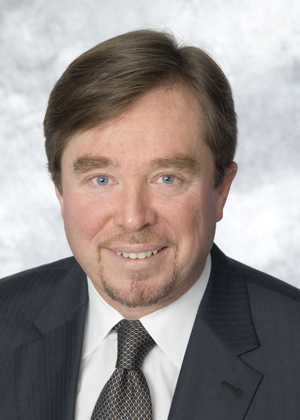Changes to the Law Society of Upper Canada’s disciplinary regime will soon apply to lawyers who run afoul of the bar as well as to their victims.

In the ongoing effort to modernize the regulation of Ontario’s lawyers, Convocation at its January meeting imposed new standards for public disclosure of disciplinary matters, established a kind of plea-bargaining system for expedited conduct proceedings, and changed the way it compensates people who have been defrauded by lawyers.
The changes will impose more accountability and efficiency, benchers said.
“This is consistent with the trend that the law society has been following . . . to make all of our processes more transparent to the public that we serve,” Bencher Tom Conway said in advocating for more prompt disclosure.
Until now, the regulator has released information about lawyers subject to disciplinary action just weeks in advance of hearing dates.
While that information is technically publicly available once the LSUC initiates proceedings, it routinely wouldn’t disclose it without a formal request from the media or a member of the public.
“It was a ‘don’t ask, don’t tell’ policy. Unless you ask specifically about a complaint, you wouldn’t know about a proceeding against a solicitor until a month or perhaps a few weeks before the hearing,” Conway said.
The motion approved by Convocation calls for making that information available on the law society’s web site once it issues a notice of application or a referral.
“The issue really is about timing,” Conway explained.
The law society was the subject of recent criticism for its disciplinary procedures after Kevin Murphy, a defence lawyer in a Brockville, Ont., murder trial, faced misconduct allegations for his courtroom tactics.
As was the case with the disciplinary action against Murphy, failing to publicly release notices of application when they are issued can create the perception that proceedings are initiated privately, Conway said.
In addressing concerns about the risk of publishing unfounded or malicious complaints, Conway said the LSUC would still evaluate the merits of each complaint it receives.
“No proceeding gets started unless it passes muster with the proceedings authorization committee, so there has to be a reasonable basis for the application.”
Convocation also approved a two-year pilot project designed to process conduct hearings more quickly when both sides make a joint submission.
As a result, when a lawyer or paralegal admits to misconduct allegations and consents to a joint penalty, the new pre-proceeding consent resolution conference will be able to fast-track the investigation and hearing.
“It’s dealing with our cumbersome process to permit early resolutions and effectively what in a criminal context might be called plea bargains,” Bencher Paul Schabas said.
Either the licensee under investigation or the law society itself can initiate the process.
The two sides would then negotiate on admissions and penalty.
Currently, after the proceedings authorization committee mandates a prosecution, a full investigation and disciplinary hearing process must follow even if the lawyer admits the misconduct and seeks a quick resolution.
According to an LSUC committee report, joint submissions will reduce the time and expense to investigate and prosecute a complaint.
In a mortgage fraud case, for example, law society counsel may invest 200 to 400 hours, the report said. More complex cases require even more time.
Accused lawyers can also avoid significant expense by agreeing to the alternative process.
Committee members estimate that about 10 cases a year will be fast-tracked under the pilot program.
However, cases involving more severe allegations or novel issues won’t be eligible for the process, the report said.
On the victim side of lawyerly misconduct, Convocation overhauled the committee charged with compensating those who fall prey to dishonest practitioners.
The compensation fund committee approves payments to members of the public who have suffered losses at the hands of a lawyer or paralegal.
From August 2007 to August 2008, the committee doled out $2.3 million to claimants related to the misconduct of 40 lawyers who were suspended, disbarred or permitted to resign.
Since 2000, there have been 10 grants exceeding $500,000. According to a law society report, the largest single claim went to victims of a disbarred lawyer identified as “WMc.” A total of 105 grants in that case amounted to $3.9 million.
“It’s a very important part of this society’s functions,” Bencher Tom Heintzman said.
He recommended, and Convocation approved, reducing the size of the committee from nine members to five to include two lawyer benchers, two lay benchers, and one paralegal bencher.
“You just don’t need nine people to do this job,” Heintzman said, adding the new composition strikes a good balance and sends the “right message to the public.”
The responsibilities of the review subcommittee, which examines recommended grants in excess of $5,000, were also rolled into the newly formed fund committee.
A smaller committee would be best positioned to assume both the policy and grant review functions, the report said.
“It would be in the interests of the fund if those performing the grant-making role could apply that experience to influence policy review and development.”
One of the lawyer benchers must chair the committee, a reflection of the nature of the bulk of the claims made to the law society, Heintzman said.
“We pay a lot of money for lawyers so far and very little for paralegals.”

 In the ongoing effort to modernize the regulation of Ontario’s lawyers, Convocation at its January meeting imposed new standards for public disclosure of disciplinary matters, established a kind of plea-bargaining system for expedited conduct proceedings, and changed the way it compensates people who have been defrauded by lawyers.
In the ongoing effort to modernize the regulation of Ontario’s lawyers, Convocation at its January meeting imposed new standards for public disclosure of disciplinary matters, established a kind of plea-bargaining system for expedited conduct proceedings, and changed the way it compensates people who have been defrauded by lawyers.